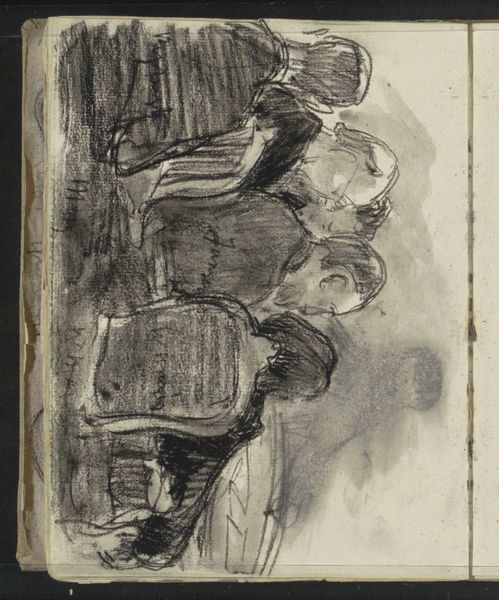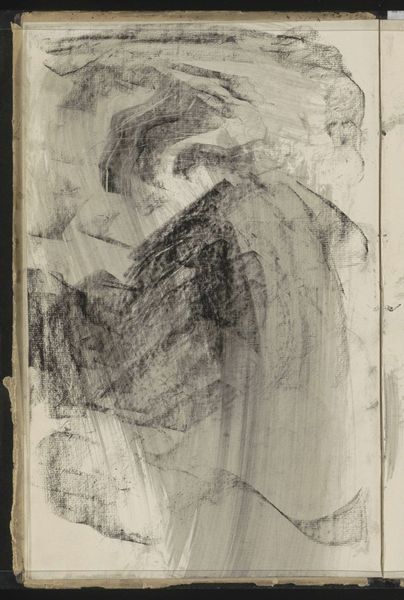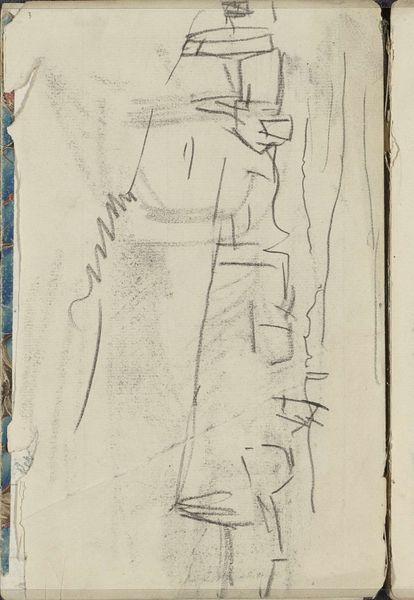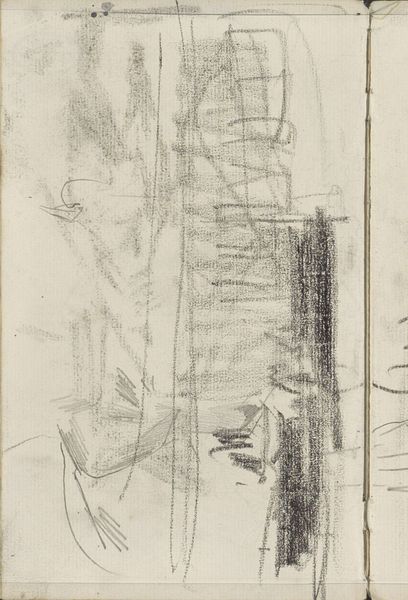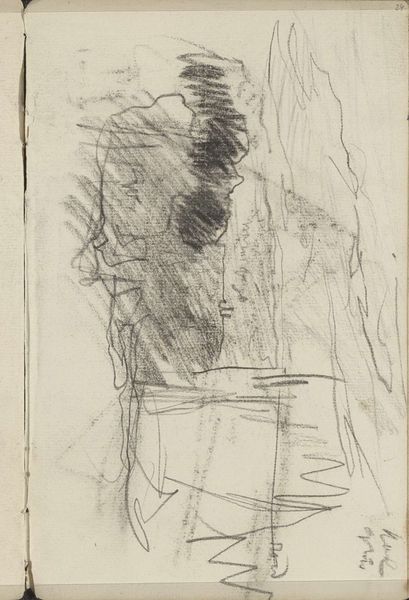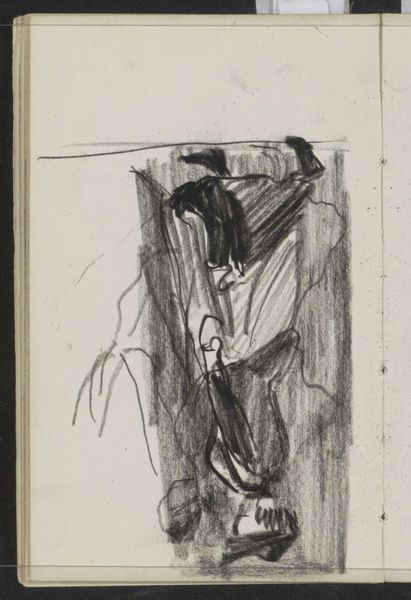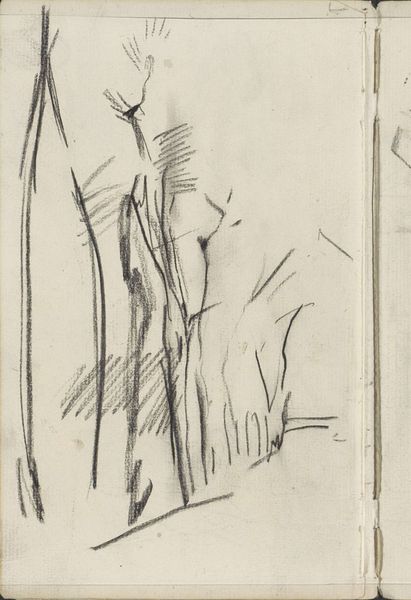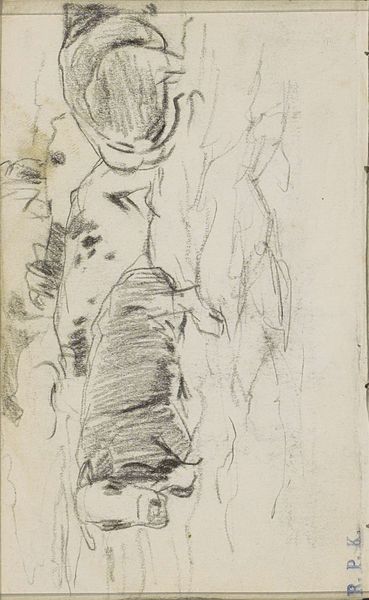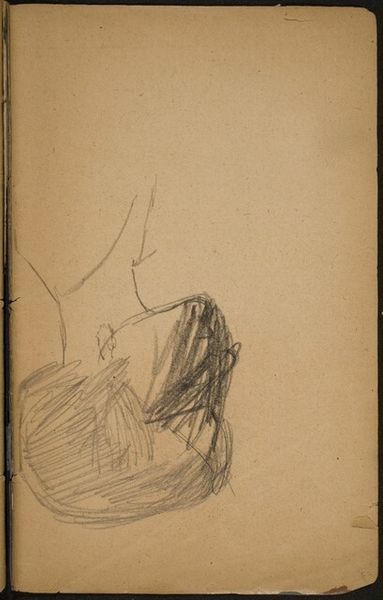
Copyright: Rijks Museum: Open Domain
Curator: Looking at "Studie" by Carel Adolph Lion Cachet, dating back to around 1890 and residing here at the Rijksmuseum, what immediately comes to mind? Editor: Honestly, it feels like a fleeting thought caught on paper. Ghostly strokes of pencil and graphite dance, hinting at something, but refusing to solidify. There’s a restless energy about it. Curator: Precisely. As a "study," it speaks to the artist's exploration of form and abstraction. Observe how the medium of pencil serves as a conduit, mapping out ideas rooted in tonal possibility and suggesting the potential for dimensionality on a flat plane. Are there recognizable symbols or iconographic structures here? Editor: I see fragments of a figure maybe? Gestural movements build, almost like the residue of motion itself, leaving a very light yet melancholic echo. I wonder, was Cachet trying to capture more of a feeling, or an emotional essence, instead of a concrete object? Curator: Possibly. The piece allows for various interpretations, but one interpretation, particularly from an iconographic point of view, may connect the stylistic techniques on display, to the symbolism of transience and transformation that became ever-present in Cachet’s work over the course of his artistic development. The rough impasto marks and frenetic applications remind me of the era's fascination with spiritualism and unseen forces, rendered here as visible artistic markings. Editor: I think what I find fascinating, or at least the enduring allure of a sketch like this, is its accessibility. It invites us to participate in its becoming, allowing our own imaginations to complete the narrative. It really triggers something primal. Like sketching in the dark or under the covers as a child, almost like some weird self-soothing type of comfort thing! Curator: Indeed. And for an artwork centered around such open-ended form, the interplay between technique and suggestion can unlock hidden insights and visual interpretations, even those that have existed for centuries before the study was rendered, offering fresh meanings with each passing age. Editor: It is a beautiful demonstration that even a glimpse, or a quick little burst, of creative expression has the capacity to hold layers and layers of profundity. Curator: Absolutely. Art, even in its embryonic stage, captures and echoes human experience.
Comments
No comments
Be the first to comment and join the conversation on the ultimate creative platform.

